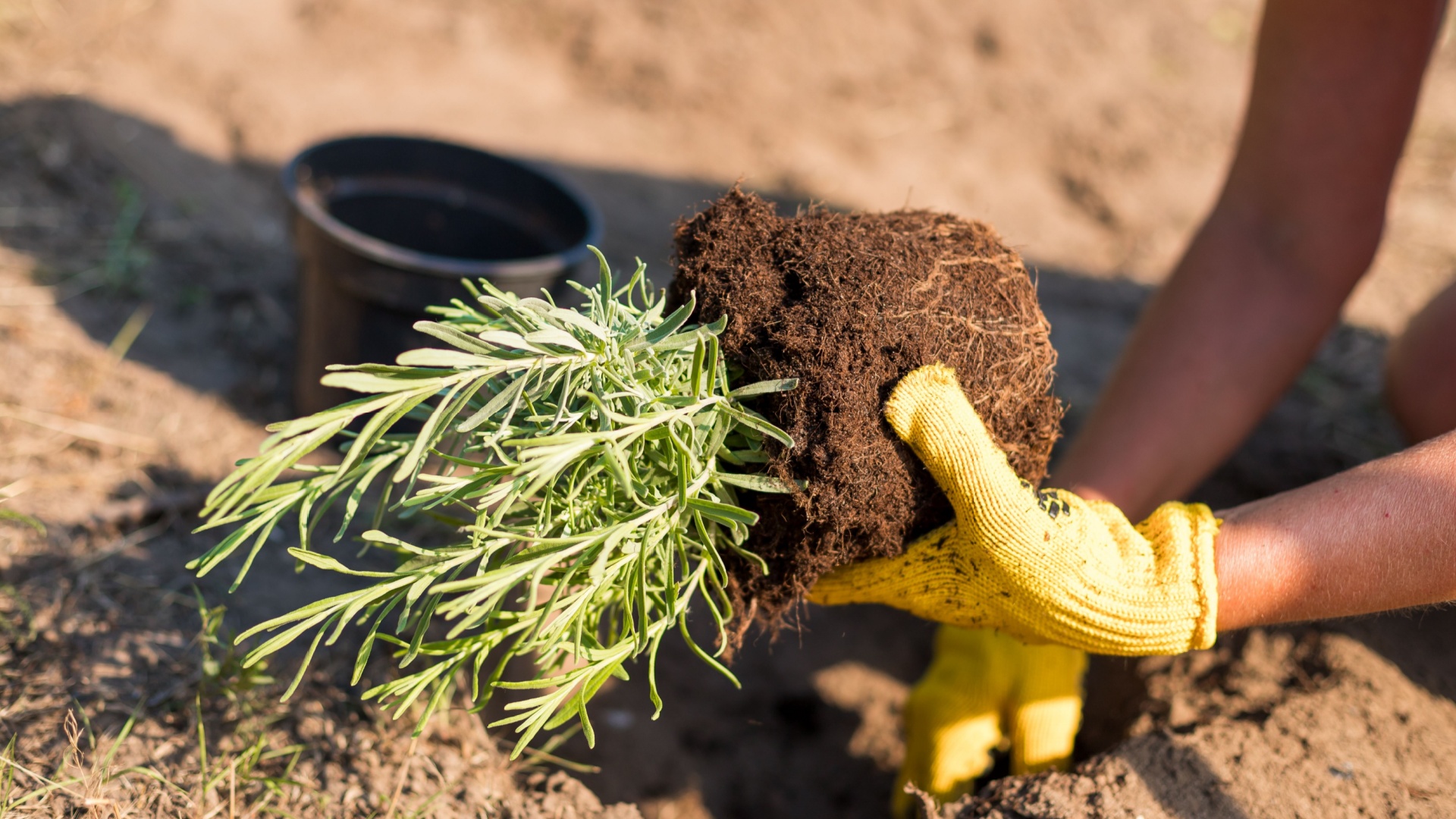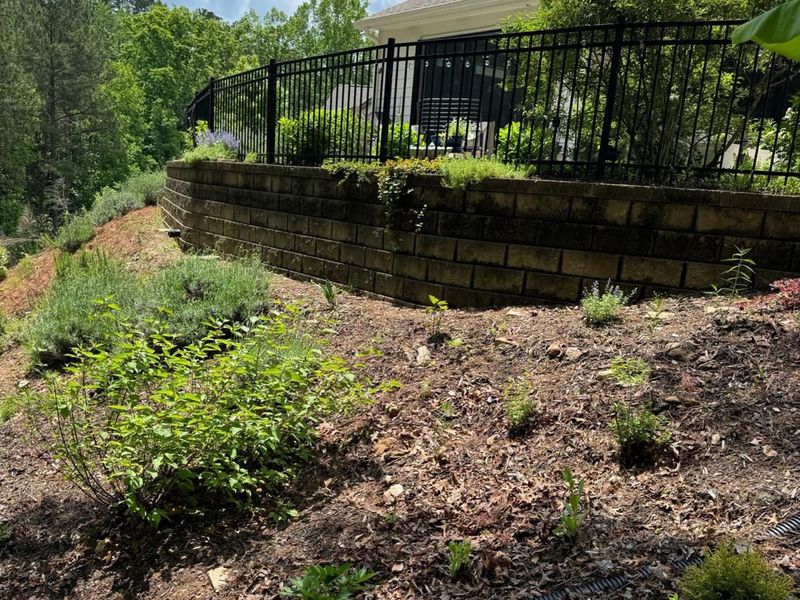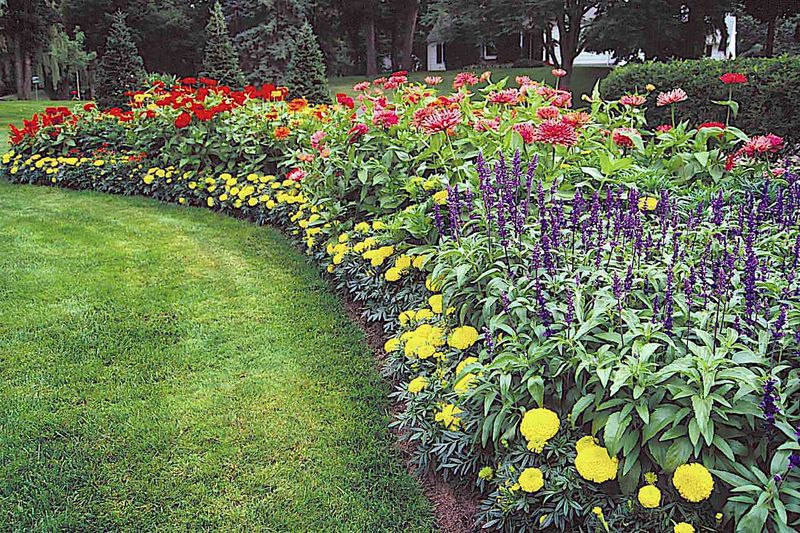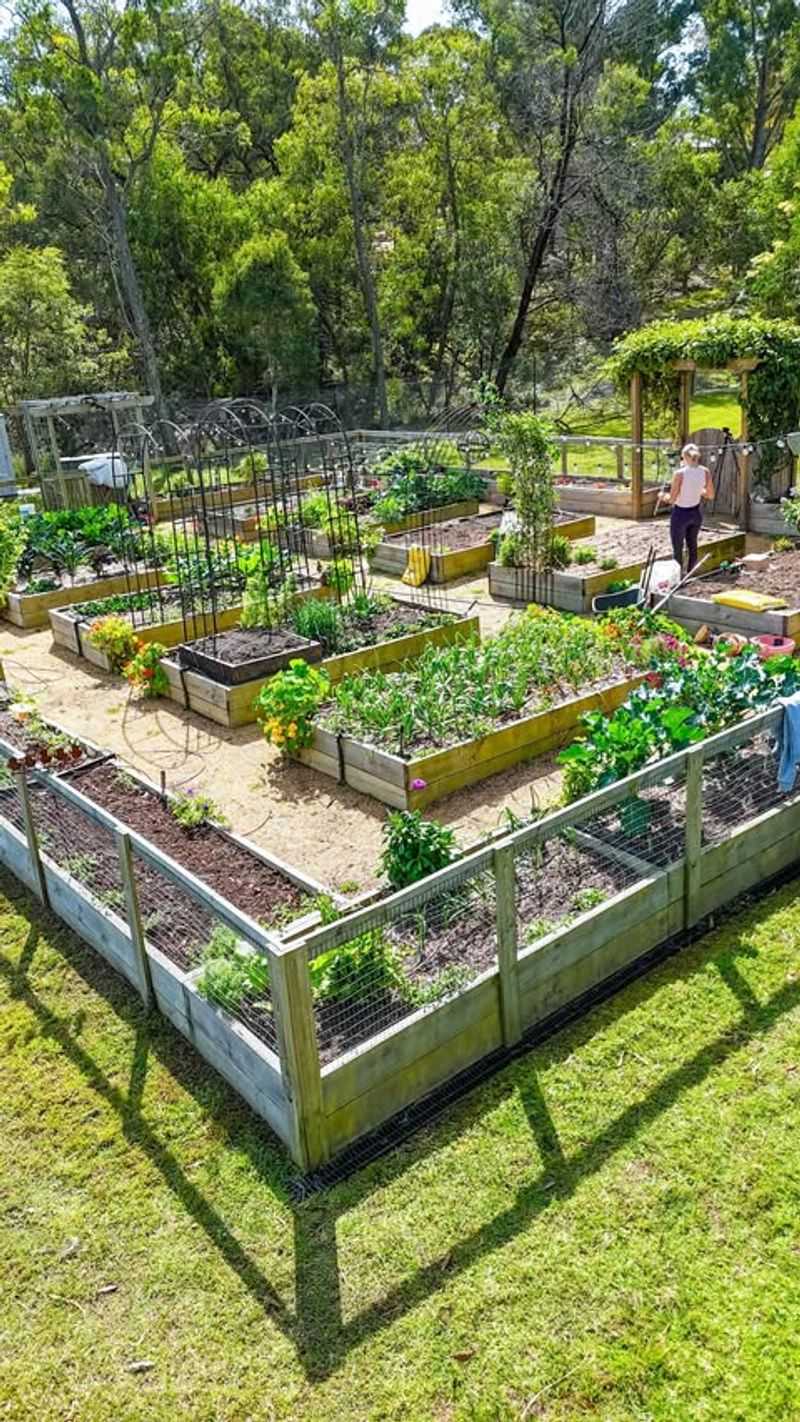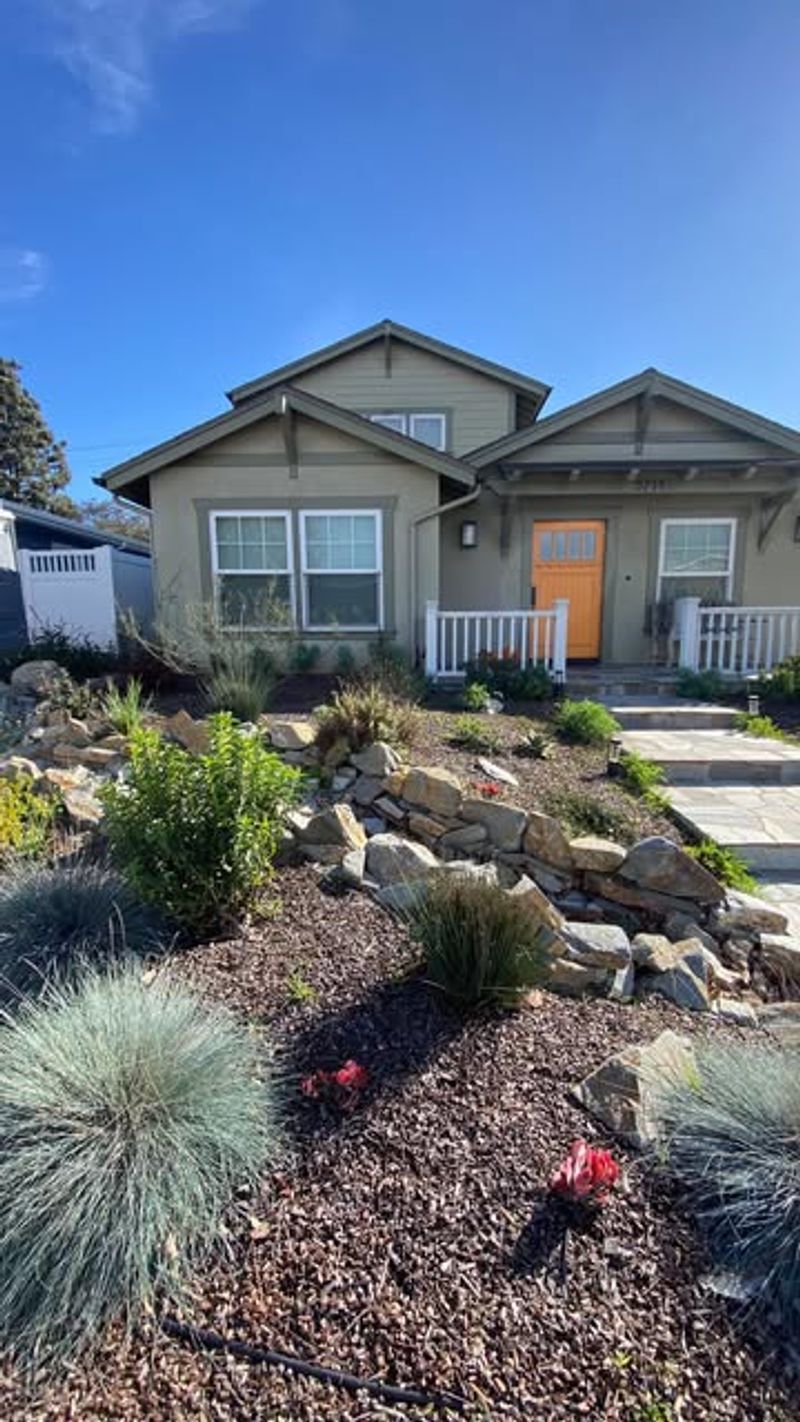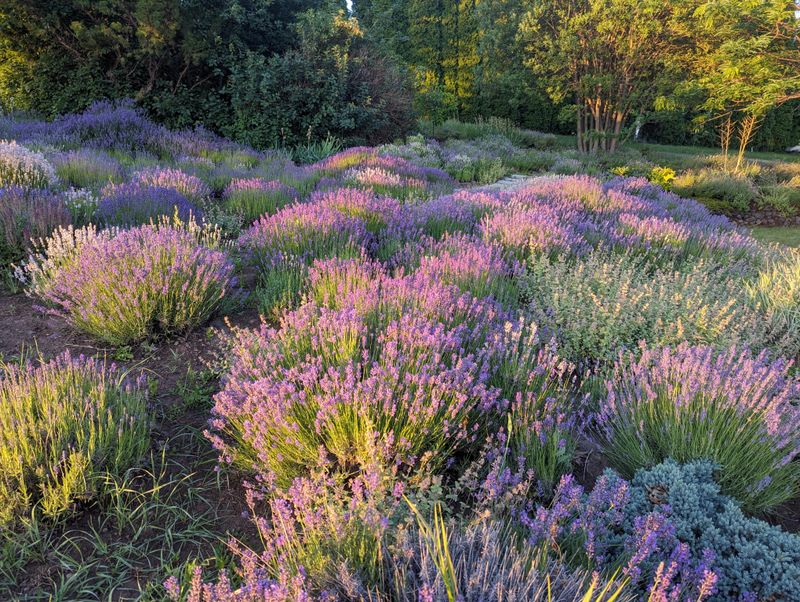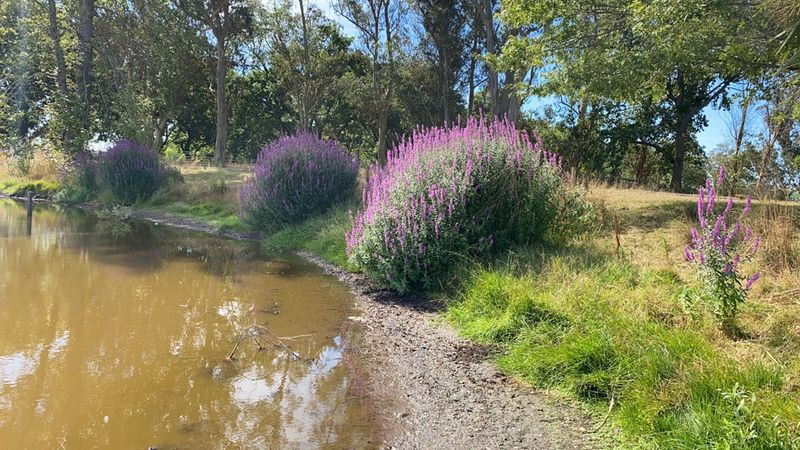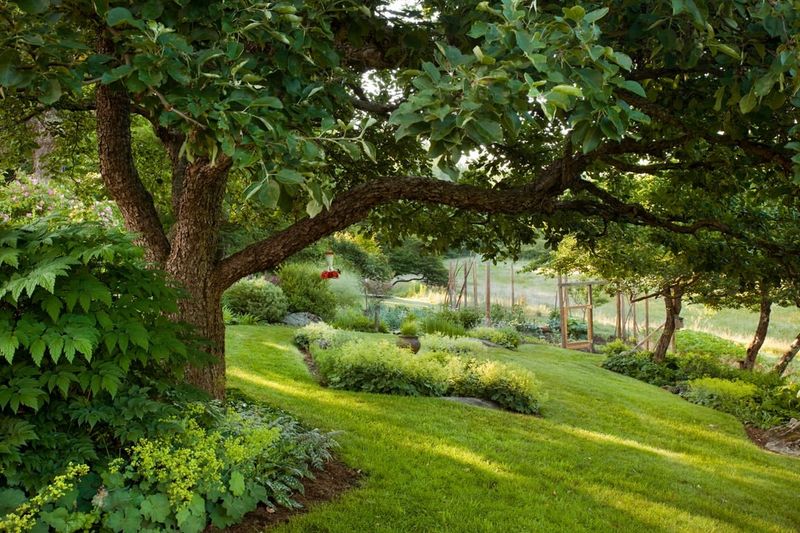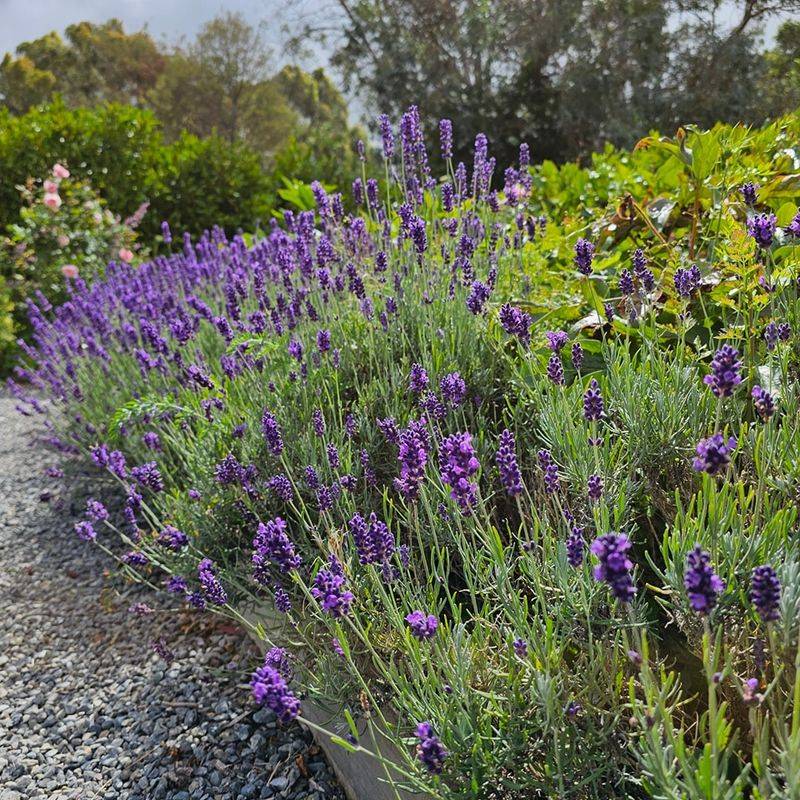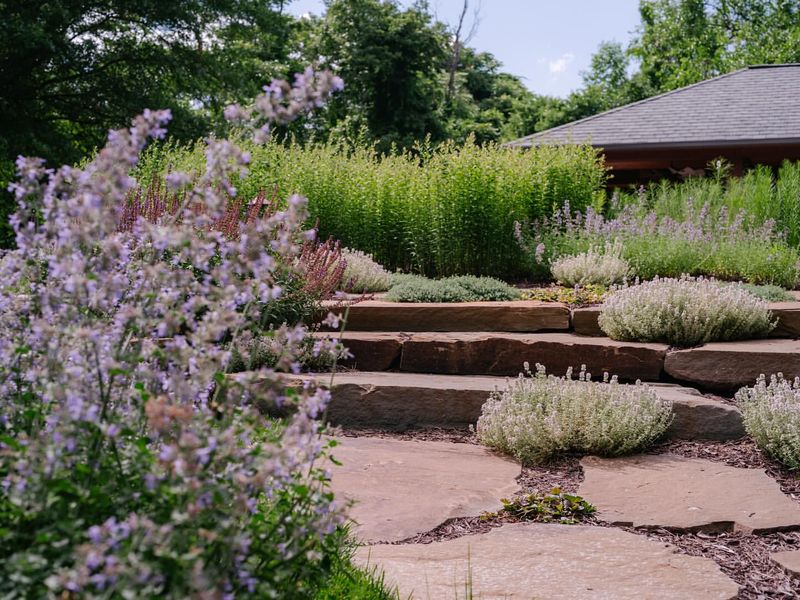Lavender may be popular, but it’s picky—especially in Georgia. Humid summers, heavy clay soil, and poor drainage can spell disaster for this fragrant favorite. Some spots in your yard could cause lavender to fail fast, while others offer just the right conditions for it to thrive.
Knowing where to plant makes all the difference between a struggling shrub and a thriving showpiece.
1. Shady Woodland Areas
Lavender absolutely needs full sun to thrive. In Georgia’s woodland areas, tree canopies block essential sunlight, causing leggy, weak growth with few flowers.
The natural forest floor also tends to be too acidic for lavender, which prefers alkaline conditions. Even if you clear a small patch, surrounding trees will eventually shade your plants as they grow.
2. Low-Lying Flood Zones
Georgia’s frequent summer thunderstorms can create temporary flood zones in low-lying areas. Lavender roots rot quickly when waterlogged, often killing the entire plant within days.
These areas also tend to retain humidity, creating perfect conditions for fungal diseases that attack lavender. Even after waters recede, the soil stays too damp for healthy lavender root development.
3. Heavy Clay Soil Gardens
Georgia’s notorious red clay soil spells doom for lavender plants. The dense, compacted nature prevents proper drainage, leading to root rot even during normal rainfall. Clay also lacks the porous structure lavender needs for root expansion.
While you might see initial growth, plants typically decline by mid-summer as roots struggle to establish. Even with amendments, pure clay areas remain challenging for lavender.
4. North-Facing Slopes
North-facing slopes in Georgia receive significantly less direct sunlight than south-facing areas. Lavender requires at least 6-8 hours of direct sun daily to produce the essential oils that give it fragrance and color.
These slopes also tend to stay cooler and damper, creating conditions where fungal problems thrive. The combination of reduced light and increased moisture makes north-facing areas poor choices for lavender gardens.
5. Lawn Edges Near Sprinklers
The edges of Georgia lawns often get regular soakings from automatic sprinkler systems. This consistent moisture creates conditions far too wet for drought-loving lavender plants. Lawn fertilizers also frequently drift into these border areas, providing nitrogen that produces lush green growth but few flowers on lavender.
The combination of excess water and fertilizer creates beautiful lawns but terrible conditions for Mediterranean herbs like lavender.
6. Vegetable Garden Beds
Most vegetable gardens in Georgia receive frequent watering and fertilizing – conditions that spell disaster for lavender. While your tomatoes thrive with regular moisture, lavender suffers and develops root rot. The rich, organic soil that vegetables love also holds too much moisture for lavender roots.
Additionally, the constant disturbance from seasonal replanting disrupts lavender’s perennial nature. Keep these plants separated for the best results from both.
7. Beneath Roof Drip Lines
During Georgia’s frequent thunderstorms, the areas directly beneath roof edges receive concentrated water runoff. This creates alternating cycles of drought and flooding that stress lavender plants. The force of falling water can also damage lavender’s woody stems and compact the soil around roots.
Over time, these areas develop poor drainage and can accumulate minerals from roof runoff that alter soil chemistry unfavorably.
8. Coastal Sandy Soils
Georgia’s coastal areas feature sandy soils that drain too quickly for even drought-tolerant lavender. While lavender hates wet feet, it still needs some moisture retention to establish properly. Coastal winds carrying salt spray can also damage lavender’s foliage.
The combination of excessive drainage, nutrient-poor conditions, and salt exposure creates multiple challenges. Without significant amendments, coastal sandy areas rarely support healthy lavender growth.
9. Under Air Conditioner Units
The area beneath outdoor AC units might seem conveniently unused, but it’s terrible for lavender. The constant dripping of condensation creates perpetually wet soil in Georgia’s humid climate. Temperature fluctuations from the unit’s operation also stress nearby plants.
Additionally, the vibration can compact soil over time, reducing drainage. The chemicals occasionally leaking from older units may further contaminate the soil, creating multiple problems for sensitive lavender.
10. Natural Wetland Margins
Georgia’s numerous wetlands and marshy areas create beautiful natural landscapes but disastrous conditions for lavender. The naturally high water table keeps soil perpetually moist even during drought periods.
These areas also tend to be more acidic, while lavender prefers alkaline conditions. Native wetland plants will always outcompete lavender in these locations. Even during dry spells, the underlying moisture levels remain too high for lavender’s Mediterranean preferences.
11. Raised Stone Beds
Surprisingly, raised beds built with stone or concrete blocks work wonderfully for lavender in Georgia. The elevation improves drainage dramatically, preventing the root rot that plagues lavender in our climate. Stone materials gradually release minerals that raise soil pH, creating the alkaline conditions lavender craves.
The stone also absorbs heat during Georgia’s sunny days, creating a warmer microclimate that mimics lavender’s Mediterranean origins and extends your growing season.
12. South-Facing Hillsides
South-facing slopes receive maximum sunlight throughout the day, creating ideal conditions for sun-loving lavender. The natural angle also improves drainage, allowing excess water to flow away from roots. In Georgia’s hot climate, these locations warm up earlier in spring, giving lavender a head start on growth.
The excellent air circulation on hillsides also reduces humidity around plants, preventing the fungal issues that often plague lavender in our region.
13. Gravel Driveways Edges
The edges of gravel driveways provide unexpectedly perfect conditions for lavender in Georgia. The gravel creates superior drainage while reflecting heat upward toward the plants. Road dust and small gravel particles gradually increase soil pH, creating the alkaline environment lavender loves.
These areas also tend to receive less irrigation than formal garden beds. The tough, drought-resistant nature of lavender makes it one of the few ornamentals that can thrive in these seemingly harsh conditions.
14. Between Sidewalk Cracks
The narrow spaces between concrete sidewalk sections create surprisingly good lavender habitat in Georgia. The concrete gradually leaches lime, creating alkaline conditions that neutralize our naturally acidic soils.
These spaces also drain exceptionally well, preventing the root rot issues common in our humid climate. The surrounding concrete absorbs heat during the day and releases it slowly at night, creating a warmer microclimate that helps lavender survive Georgia’s occasional winter freezes.
15. Old Brick Foundation Areas
Areas near old brick foundations or walls provide excellent growing conditions for lavender in Georgia. The aged brick and mortar slowly release calcium and other minerals that create the alkaline soil lavender craves.
These structures also provide wind protection while reflecting heat and light onto plants. The ground near foundations typically drains better than open garden areas. Many Georgia gardeners discover that their most successful lavender grows near historic structures where modern amendments aren’t even necessary.

